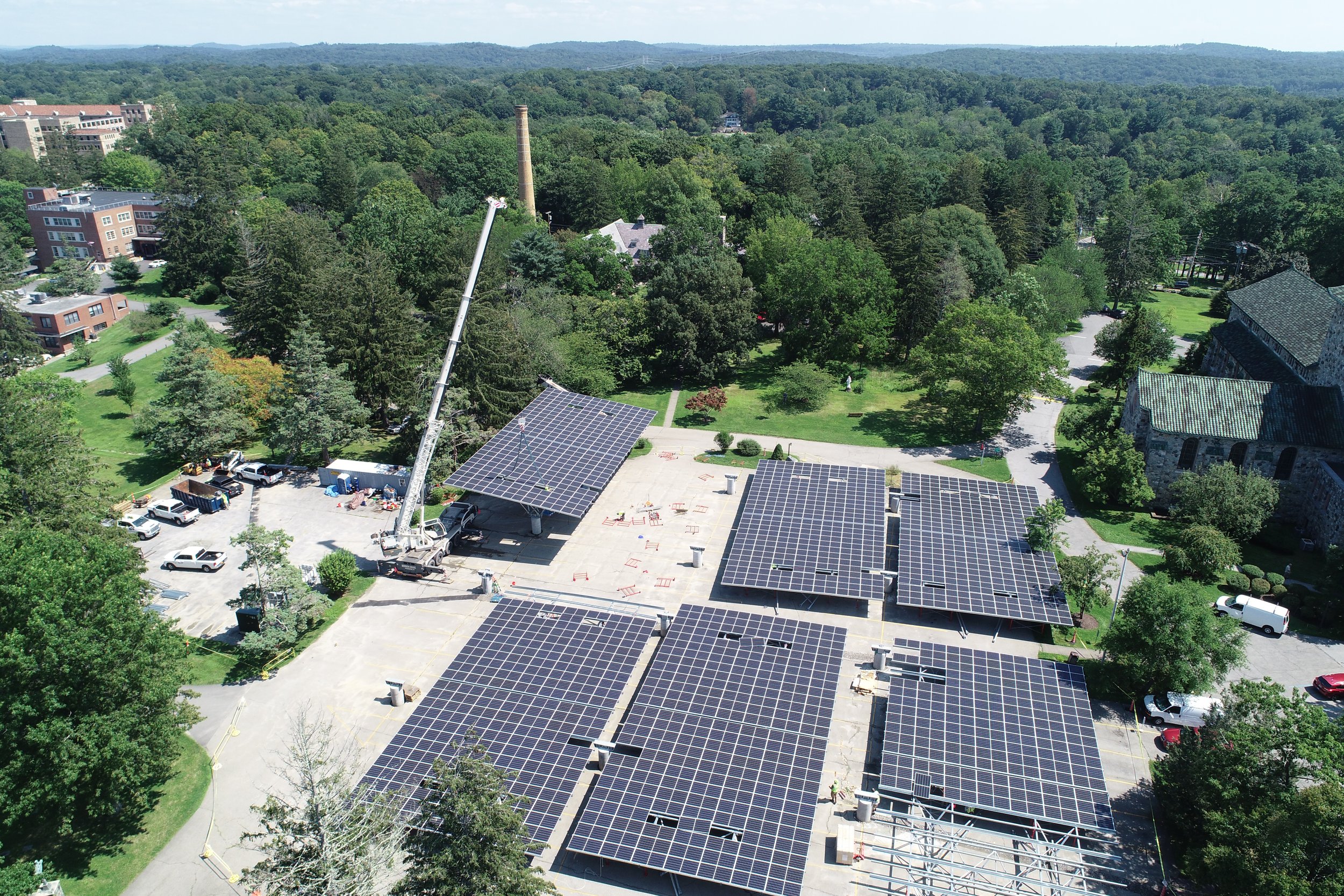Joel Santisteban, Director of Platform at Ecogy
A Q&A with Joel Santisteban, Director of Platform
The Ecogy blog team sat down with Joel to learn about Ecosuite and its cutting-edge features.
This interview has been lightly edited and condensed for clarity.
What is Ecosuite?
Ecosuite is Ecogy’s software platform, used internally and offered to our partners as a service in itself.
Developing commercial-scale renewable energy assets is notoriously difficult. The information sharing that needs to occur between stakeholders throughout the process creates friction. Ecosuite streamlines this by serving as ‘a single source of truth’ from end to end, offering a rich set of deployment and monetization applications.
What can Ecosuite do?
We like to break down the internal capabilities into three buckets: monetization, deployment, and origination.
It was monetization first. At Ecogy, as a developer and owner/operator, we could see that existing solutions for collecting data addcross disconnected systems clearly weren’t sustainable or scalable, so we thought, ‘we need to layer in software to consolidate that,’ so we can standardize it and aggregate it up so that we can view it and monetize it more effectively.
We’ve developed the capability to remotely control our solar systems and load control devices––like HVAC units in demand response programs. We also have the ability to remotely shut down many of our assets using utility-required protocols.
On the more cutting edge side, we received a grant from the DOE to pursue machine learning and artificial intelligence applications for solar. We cannot stress enough how valuable that will be not just to us but to the industry as a whole. We have the ability to deploy a machine learning algorithm, fully trained on years of historical data, and have it come to insights about our systems in real time. It may tell us, for instance, that an inverter is likely to fail before it happens. We can apply this to every solar system, potentially to every building. If this increases solar production around the country by one, two, three percent every year—that would be a game changer.
Our software can also manage field service requests for our O&M providers. We have assets across the entire East Coast, and we manage that all through our system.
On the deployment side, the Ecosuite is a development platform. It is where our team goes to find truth on a project. We have very detailed Gantt chart templates and dependency matrices that we feed into our platform to track timelines, which are directly connected to our cash flow forecasts. We have the ability to communicate with contractors on requests for information (RFIs), so that our engineering team can assist. We have a mobile app that we actively use to commission the EcoNode, the gateway that makes all this possible. We’re bringing this to the market for others’ use because we’re all in this together. We’re trying to empower the industry.
And then in the origination bucket, we’re sitting on a lot of data which enables us to systematically qualify whether or not a site is suitable for DERs, to qualify those sites across entire portfolios, and layer that in with industry-standard commercial contracts that we need to execute in order to actually have a product in the first place.
Since AI is so hot right now, I have to ask, how else do you see this being implemented into Ecogy’s tech?
I’m glad you asked. The goal here is all about enabling us to make better predictions about how our systems are going to perform and to accelerate the complex deployment process required to bring those systems to market. We’re developing a machine learning framework which we call SolarQuant that will enable researchers to easily apply trained machine learning models, including neural networks, to the grid-edge. It’s being developed as an open-source toolkit, so teams from around the world can experiment with it and share their findings on problems that all of us in the industry need to work together to solve.
We’re also developing specialized AI chatbot instances that our team can interact with to answer questions about any of the systems in our portfolio, in any stage of development, with ease. We have equipped these chatbots with the ability to access data across our Ecosuite and the assets tracked within it, which otherwise would require manual searching and reporting to find. These instances will learn in real time from team conversations and decision making to support more efficient navigation of the complex development process. Stay tuned for further announcements about these functions.
Do you foresee the deployment application of the Ecosuite becoming a product in its own right?
Absolutely. We’ve been using it ourselves for many years now. We’re iterating on it every two weeks, and as a software development team we have the luxury of having our ‘customers’ sitting right next to us: the rest of the company. Using it, we’ve developed a reputation as a very effective developer with a history of executing. Now it’s time to roll it out to other folks who haven’t had the same resources or the experience or are just missing certain pieces of the puzzle that we can bring to the table and support with a partnership for the purpose of deploying more resources.
How is Ecosuite helping us relative to our competitors? Why is it a strong value that we want to share with the wider world?
The development process is complex—truly complex—and our platform enables us to bring together all of the information needs of us and our stakeholders into a single, centralized place. And of course, it enables us to future-proof the way we monetize our assets. We can layer in market requirements and opportunities that might not exist today, remotely, because of the way we’re developing on an open source platform.
How does Ecosuite help our customers today?
This is where I get excited. If I put myself in a customer’s shoes, with hundreds of properties, and each of those properties may or not be eligible for various different renewable energy resources and programs. What we’re offering our customers today is an industry-leading consolidated experience for the identification, development, and ultimate management of all these resources.
It’s really compelling from a few angles. As a customer, it saves me a lot of time and energy to have all this information in one place, especially because there’s somebody I probably need to report to at the end of the day. And also, our software does not restrictively silo our customers into any specific hardware or resource mix, it is fully interoperable and it can handle the site nuances that we all know exist.
And then we’re bringing really cool technology to the table that will help with carbon accounting, carbon being ‘the unaccounted liability’ for all businesses, big and small. We’ll be able to do carbon accounting for our customers and report on it systematically.
What’s that technology?
We can translate generation, consumption, or dispatchable storage performance data into relevant carbon metrics, utilizing hourly fuel mix data from the local ISOs or grid operators, which is a level of granularity that often goes overlooked.
Most folks look at carbon accounting on a more volumetric, annual basis—‘Oh, I used this many kWhs this year, which is roughly equivalent to this many tons of CO2.’ But that’s not true. More accurate figures are time and location based. A kWh at 3pm in NYC is not worth the same, from a carbon—and price—perspective, as a kWh at 2am in Albany. We’ve layered this in and it’s a pretty cool hourly engine that we’re offering.
Ecogy’s nodes as they appear in Ecosuite
We want to be enabling virtual power plants (VPPs). How will Ecosuite allow for that?
The concept of the VPP is that now that I’ve done the hard work and deployed an array of heterogeneous resources, with different inverters and different batteries and ev chargers and load control devices, et cetera, I now have the ability to aggregate those resources and optimize the way we monetize them as a collective.
A small standalone battery system can only do so much in the local distribution market at its property. But when combined with ten other storage systems across an ISO territory, it becomes a wholesale resource, a resource for the broader system. Our endgame is certainly that—because it’s the definition of optimizing the monetization of resources across a network.
But what’s really important to understand is that we’re also driving the approach to how VPPs participate in their various markets. We are thought leaders on the energy services interface (ESI), a protocol through which any individual resource or its aggregate will communicate with its stakeholders, those being the utility, DSO or the ISO. It’s important because this is the way we would go about achieving VPP-type monetization.
Is our ESI something we’d envision anybody and everybody using?
Yes. It’s the internet of the grid, and it’s available to all. It’s analogous to TCP/IP for the internet, but applied to the grid. We actually won a grant for developing this from the DOE via the Smart Electric Power Alliance’s (SEPA) DER Plug and Play Challenge. The ESI is how we proliferate interoperability across the grid. It is how resources will communicate with grid operators and how stakeholders will monetize assets. It also offers a standard data taxonomy associated with how we develop, finance, deploy and operate these assets.These fundamentals, the plumbing, are all open source and fully accessible.
What’s the best part of your job?
I get to sit in the very fun position of being at the intersection of everything, engaging with the technical, deep-in-the-weeds folks but being a translator for what I know best, the commercial applications of these things. It’s the intersection between the technology and the commercial viability that is pretty unique and gives me exposure to the entire organization. It’s something new every day, to say the least.













